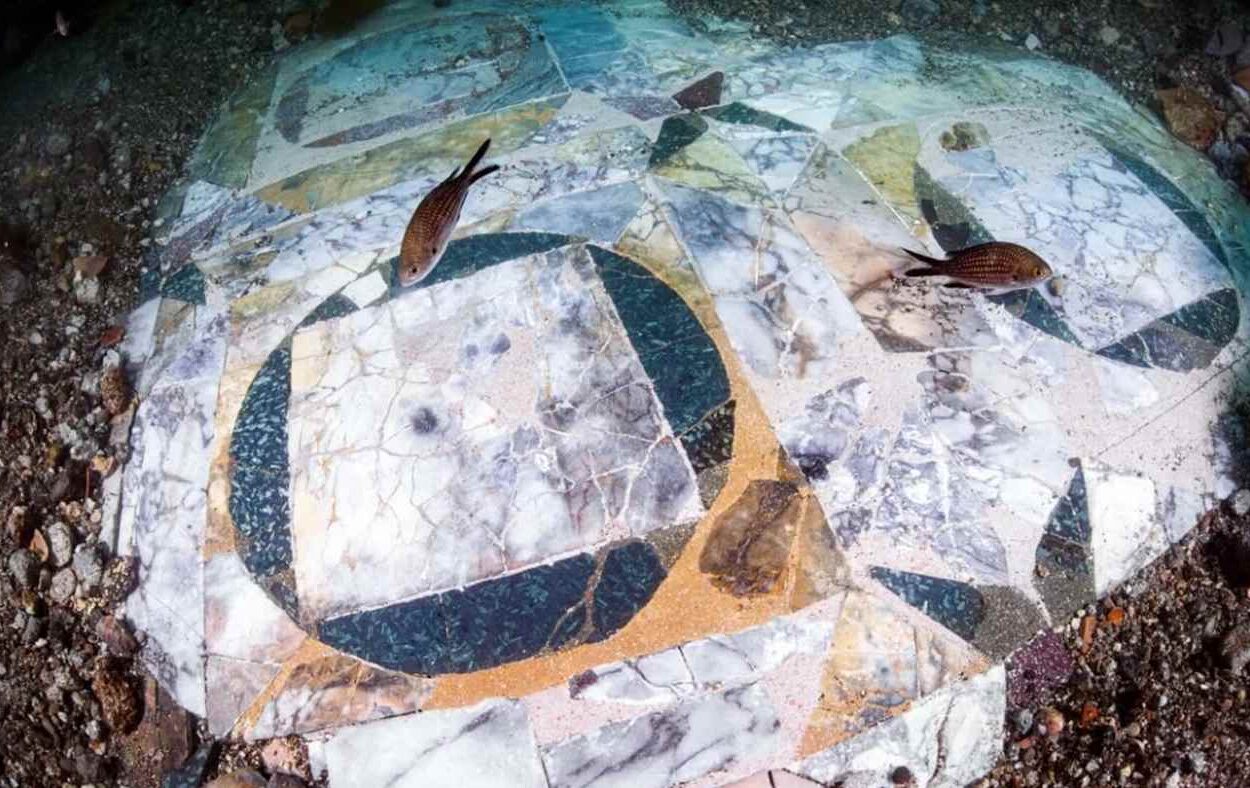A remarkable underwater mosaic dating back to the late Roman Empire has been discovered in the Bay of Naples, near the resort town of Baiae. Believed to have once graced the floors of a seaside villa owned by the Roman patrician class, this artifact offers fascinating insights into the opulence of ancient Rome.
Historically, the area was known for luxurious villas owned by prominent figures such as Mad Emperor Nero and Julius Caesar. However, a seismic phenomenon known as bradyseism caused these grand houses and their surrounding lands to gradually sink into the sea. This same phenomenon is responsible for depositing the newly discovered mosaic under the sea.
The mosaic, composed of marble tiles, has been identified by archaeologists at the Parco Archeologico Campi Flegrei as originating from “other floors and other walls”. The park authorities revealed in a Facebook post that the recovered tiles are being immersed in fresh water to remove marine salt. Each tile is being studied individually with the goal of reconstructing a complete section.
Josi Gerardo Della Ragione, the local mayor, praised this discovery as “stupendous” in a Facebook post. He suggested that the floor was likely installed towards the end of the Roman Empire, “shortly before bradyseism brought these wonders to the bottom of the sea”.
Campi Flegrei is a 125-mile stretch of submerged land located between the islands of Capri and Ischia in the Bay of Naples. Formed by a volcano that last erupted in 1538, it is a popular diving site known for its underwater ruins and abundant marine life.
For more captivating discoveries from Roman archaeology, consider exploring this 2,300-year-old mosaic made of shells and coral found buried under Rome or this 2,000-year-old home discovered under a seaside playground that may have belonged to Pliny the Elder.
Share this incredible underwater discovery with your friends who love Roman history…
Source: Good News Network






Leave a Comment